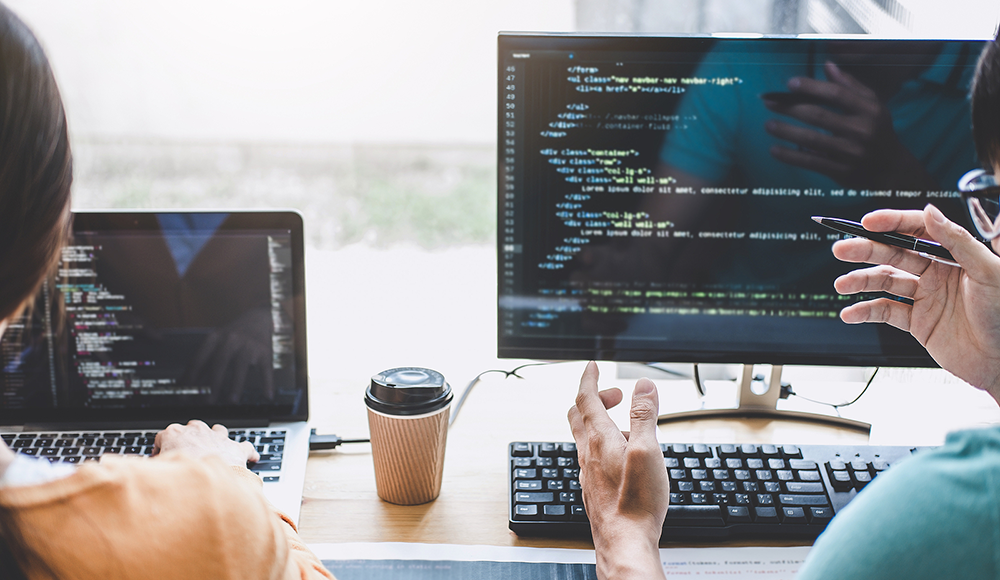5 IT Tasks You’ll Need to Complete to Safely Reopen Your Office

As lockdown measures relax further, company owners are starting to look for ways to safely reopen their offices. While social distancing and hygiene measures are rightfully receiving much of the attention, it’s important that office reopening plans also account for the various IT tasks that will be necessary to facilitate employees’ return to work.
Here are a few things to keep in mind to ensure your systems are ready to go when staff arrive back in the office:
1. Prepare Your Machines
Before employees return, you need to get your computers working and ready to go. If they have been completely out of use for several months, it’s likely they’ll need new passwords, system updates, antivirus scans, and possibly more. These processes can take a while to carry out, so it is advisable to give your IT staff a head start. Let them prep your computers before other employees return. Staff members who have been using company equipment at home may also need to be reconnected to the office network.
While you want your IT team to prepare as much as possible before the office reopens, it is also a good idea to have some IT staff members on hand the day the office opens up again. Problems may arise as employees return to office equipment for the first time in months, and having IT staff in the office will help you solve those issues quickly. It may also be worth staggering employees’ return-to-office dates to ensure your IT team isn’t flooded with too many requests.
2. Set Up Hot Desking
Hot desking can be a good way to facilitate social distance. However, users won’t be able to share hardware such as phones, keyboards, and computer mice under current circumstances, so it may be necessary to procure additional hardware in preparation. Alternatively, staff could be asked to use their own laptops.
Managers should make sure there is no option to share hardware by simply removing any potentially shared devices. This should include traditionally shared hardware such as any kept in meeting rooms or at reception. To support safe hot desking, ensure that desks are positioned far enough apart, kept entirely clear of equipment, and regularly cleaned.
3. Prepare Meeting Rooms
While staff have been working from home, companies have been hosting meetings on digital applications like Microsoft Teams and Zoom. As employees return to the office, however, meetings will likely require a new strategy.
In order to maintain social distancing, it won’t be possible for staff members to use meeting rooms in the same ways they used to. Some attendees may be in the room, but others may have to remain at their desks or participate from home. To help accommodate a meeting like this, companies need to think about the technology that exists in their meeting rooms. It might be wise to invest in a quality camera and an expansive sound system with multiple speakers to ensure that all participants can see and hear each other clearly, no matter where they are. Individual headsets are another option. Regardless of what you put in place, remember to discuss the new equipment with your IT team so they can properly prepare it before it is required.
4. Consider Data Protection Laws
When the coronavirus pandemic first hit, many employees were asked to start working from home in haste. This needs-must situation meant that little thought was given to how remote work arrangements might breach data protection laws.
Depending on the laws to which your company is subject, it might be necessary to have a data asset register — that is, a list of all the places in which data is stored. While your organization may already have such a register in place, the quick response to the lockdown may have complicated things. Make sure your records are up to date and accurate by looking into whether information is being stored on USB sticks, local drives on personal devices, or elsewhere.
To avoid breaching laws, it might be a good idea to use a companywide storage system that can be accessed remotely, such as Microsoft Office 365. If data can be kept in one location, then other potentially unsafe data stores can be deleted.
5. Stay Secure
Cybersecurity requires special attention as companies prepare to reopen their offices. Many of those who have been working from home throughout lockdown were asked to use their personal machines. While this was a useful means to an end, the truth is the use of personal devices is a considerable cybersecurity risk. This is because employers have no control over employees’ personal machines and cannot monitor them or keep them secure.
The opening up of access to your systems remotely means you’ve lost control over antivirus protection and you’re vulnerable to risks from employees’ personal emails and casual internet use. As staff members return to the office, this problem should be fixed. If employees will work from home at times, consider providing them with company equipment that can be monitored and protected as necessary.
—
After months of working from home, employees all over the world are keen to get back to a sense of normalcy by returning to the office. To help make the transition as smooth as possible, company owners and senior leaders need to think about more than just achieving social distancing. They also need to consider the practical aspects of working, including preparing all the necessary hardware and software.
Dan May is the commercial director at ramsac.

